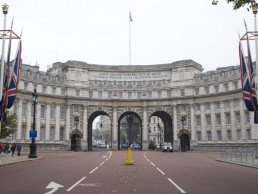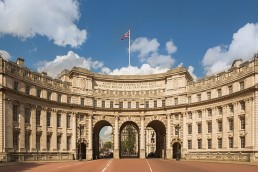Government leases out historic Admiralty Arch
Following a competitive bidding process, London-based PIC won the right to undertake the sensitive restoration of Admiralty Arch in accordance with the design of its original architect, Sir Aston Webb. The building will remain in the ultimate control of taxpayer, the Government having retained the freehold of the property.
Minister for the Cabinet Office Francis Maude said he was ‘delighted’ with the news. “Our innovative new approach to managing the government’s property estate has helped us generate more than £640 million of savings for the taxpayer since the General Election,” he said.
“The restoration will bring jobs to London and beyond. The freehold of the building will remain in the hands of the public, ensuring they have a say in the future of this building forever.”
To restore the Grade-I listed building, which currently costs £900,000 per year to run, PIC has worked closely with English Heritage and Westminster City Council. PIC plans to reinstate many lost features using original Sir Aston Webb drawings from around 1910. Nigel Barker, Head of Development Management for English Heritage, said the external appearance of this prominent London landmark would be left ‘almost unchanged’.
The Admiralty Arch was built in 1912, to provide a ceremonial passage from Trafalgar Square to Buckingham Palace. Though it originally housed offices and residences for the Sea Lords of the Admiralty, the building is currently empty and has never before been open to the public. It requires extensive restoration and is not suitable for a modern office.
CEO of Prime Investors Capital, Rafael Serrano, said: “We are committed to preserving the iconic status of Admiralty Arch and celebrating Sir Aston Webb’s historic design, while restoring, modernising and adapting it sensitively for a new use that will sustain its value for future generations.
“We will deliver the very finest hotel for London, with an unrivalled history and location, while providing maximum security measures to protect surrounding Government buildings and areas of State importance.”
Related Posts
27 October 2017
Admiralty Arch welcomes Waldorf Astoria
16 November 2012




